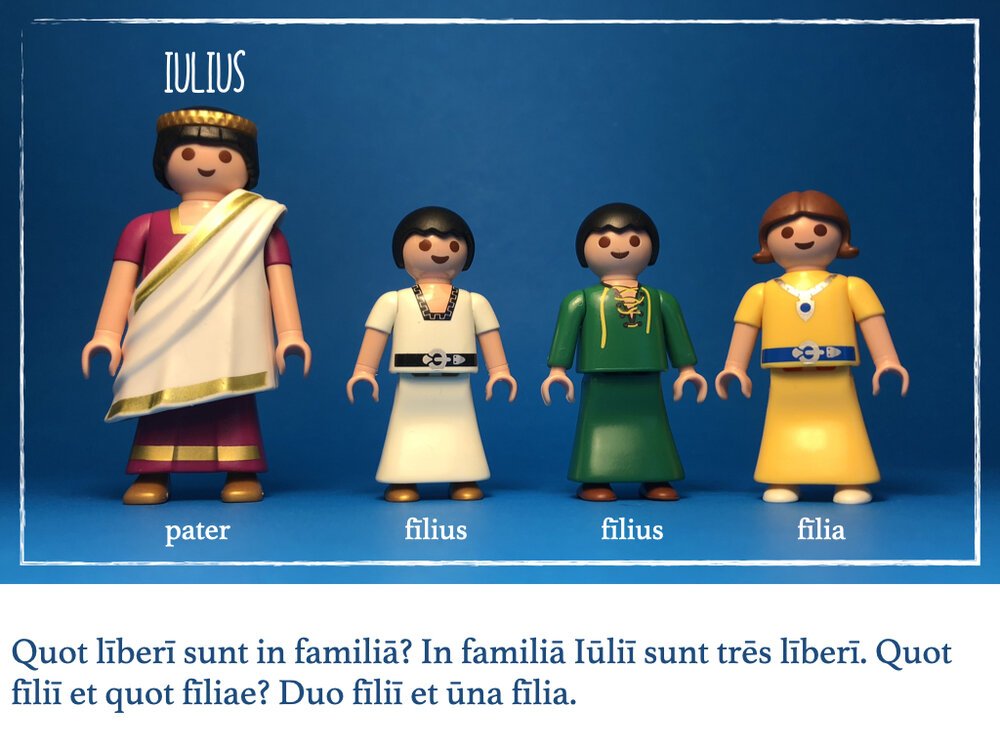We started off the lesson with a speaking exercise. I asked the students to take out the family tree I gave them last lesson (see Lesson Fifteen) and I wrote the following on the board. I went around the room and asked the first half of the students a question like “Quis est Claudius?” or “Quae est Claudia?” to which they responded as the board suggested:
2. I told the second half of the class that they would be receiving a more complex question, something along the line of last lesson’s "‘cuius mater/pater/filia/filius est x?”. For the last two students, I saved up “cuius uxor?” and “cuius maritus?”, which is not in their text, but which we have been using.
3. I asked the students to reread the notes on ‘servi and ancillae’ (see Lesson Fifteen) which they had copied into their exercise books, and declare if anything didn’t make sense to them. There was a question about the phrases ‘numerus servorum’ and ‘numerus ancillarun’ wich allowed us to revise those expressions.
4. We now put the second part of Capitulum Secundum up on the board and read it together, again with myself reading the teacher’s voices and the students reading Apollo and Diana. When the new word “quot” appeared, I asked the students to use the response to the question to determine the meaning of quot, which they were able to do. The slides for Capitulum Secundum are available here. Note: During the reading of this section I became concerned that it perhaps ran a little too long to be read in one sitting, but the students didn't appear to mind terribly.
5. I asked the students to hold up their hands showing how much of the text they felt they had understood, out of ten, on their fingers. I would say the average was nine, with quite a few tens and nothing less than an eight.
6. The students now reread the same section from their textbook, writing down anything that they did not understand in the “nondum intellego” section at the back of their books. We then shared the things we did not understand. I am increasingly trying to have other students respond to these uncertainties.
7. We finished the lesson with a game of Pictionaria. The expanded set now includes words from Capitulum Secundum and “i piscatum”, although I only left in the more memorable words from that game. We used the same rules as last time - one student draws a card from the deck, then draws that image on the board while other students guess in Latin what they are drawing. When a player guesses correctly, they take a turn. Note: Some students tended to just shout out whatever Latin words they knew in fast succession, which was kind of good in itself but not in the spirit of the game. I will consider having a “one guess each” rule the next time we play. Pictionaria cards can be downloaded here.



